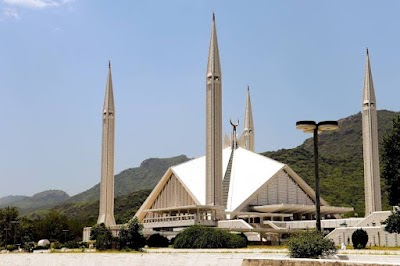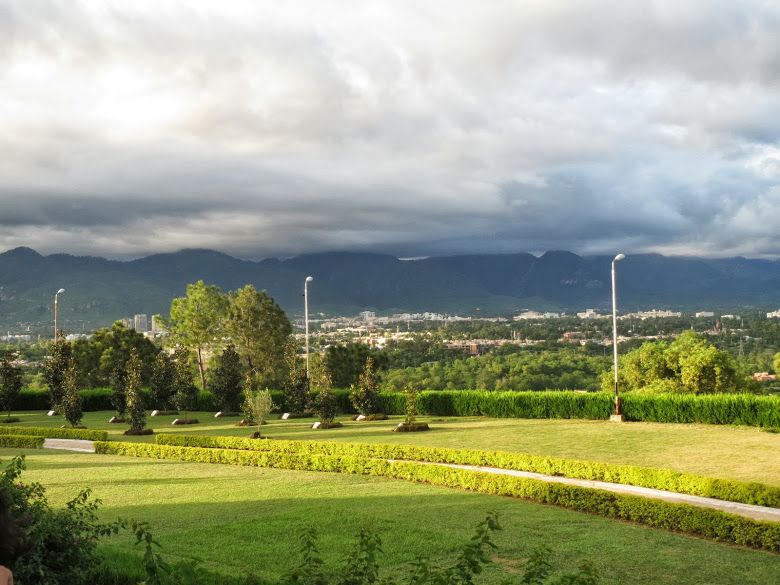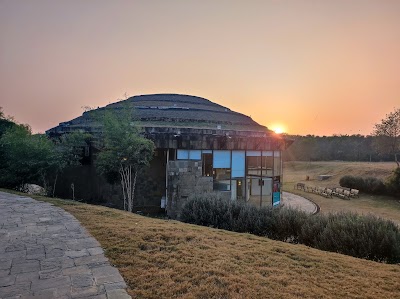Shah Faisal Mosque (شاہ فیصل مسجد)
Overview
Located in the heart of Islamabad, the **Shah Faisal Mosque** stands as one of Pakistan’s most iconic landmarks and a stunning example of modern Islamic architecture. Nestled at the foothills of the picturesque **Margalla Hills**, this grand mosque is not only a place of worship but also a major tourist attraction that draws visitors from around the globe.
Commissioned in 1976 with a generous grant from **King Faisal bin Abdulaziz** of Saudi Arabia, the mosque is named in his honor. Designed by the Turkish architect **Vedat Dalokay**, the Shah Faisal Mosque beautifully blends contemporary and traditional Islamic architectural styles. Its design was the result of an international competition aimed at creating a structure that epitomizes Islamic harmony and unity. Completed in 1986, it has since become a symbol of the enduring friendship between Pakistan and Saudi Arabia.
The mosque is particularly notable for its **striking and unique design**, departing from conventional mosque architecture. Instead of the traditional dome, it features a large triangular prayer hall, supported by an intricate structure of eight-sided concrete shells. This modernist approach creates a vast sense of openness and serenity within the mosque. It can accommodate approximately **100,000 worshippers**, with 10,000 in the main prayer hall, 24,000 in the courtyard, and the rest in the adjacent grounds.
One of the most impressive features of the Shah Faisal Mosque is its **four towering minarets**, each soaring to 260 feet (79 meters). Inspired by Turkish design, these slender, pencil-shaped minarets prominently mark the mosque against the city skyline, making it visible from afar. The courtyard and main prayer hall are adorned with pristine white marble and exquisite mosaics, predominantly in shades of blue, reflecting the traditional Islamic art that emphasizes geometric precision.
Set against the lush backdrop of the **Margalla Hills**, the mosque exudes a tranquil and majestic aura. The natural surroundings create a serene environment, making it not just a place for religious practices but also a peaceful haven for contemplation and sightseeing. Visitors often take advantage of this scenic backdrop to capture memorable photographs, showcasing the mosque’s grandeur alongside the stunning hills.
Significantly, the Shah Faisal Mosque serves as the **national mosque of Pakistan**, embodying the country's devout Islamic heritage and its cultural ties with Islamic nations worldwide. It also functions as an educational hub, hosting seminars, lectures, and a university offering Islamic and theological courses. Over the years, the mosque has welcomed numerous high-profile visits from dignitaries, heads of state, and renowned scholars, further elevating its status as a focal point of Islamic culture.
An interesting fact about the Shah Faisal Mosque is that its design was partly influenced by a **Bedouin tent**, symbolizing a place of assembly and refuge. Despite its modern aesthetics, every aspect of the mosque has been thoughtfully designed to align with Islamic principles and functionality.
For tourists, visiting the Shah Faisal Mosque offers an enriching experience. Non-Muslim visitors are welcome to explore the mosque outside of prayer times, and modest dress is required to respect Islamic customs. An informative guided tour can greatly enhance your visit, providing insights into the mosque's design, history, and religious significance. There is no admission fee, and photography is allowed, making it a convenient addition to any Islamabad itinerary.
In conclusion, the **Shah Faisal Mosque** is more than just a religious site; it is a piece of modern heritage that elegantly bridges the gap between tradition and contemporary design. Whether you are an architecture enthusiast, a spiritual seeker, or simply a curious traveler, a visit to this magnificent mosque promises a deeper appreciation of Pakistan’s rich cultural tapestry and architectural ingenuity.






